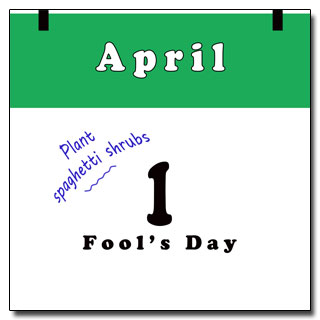April Fools and Fevers

“Mix a little foolishness with your prudence: It’s good to be silly at the right moment.” ~ Horace
There are many theories on how April Fool’s day began. Who knows for sure which approach or combination of them is accurate? Perhaps believing any one of them makes us a fool.
The rule of the day is if you prank someone after noon on April 1, the perpetrator will receive bad luck. So, just in case you read this article after noon on April 1, I superstitiously nullify any notion that I pulled a “fool-ya.”
One likely AFD theory is that people celebrated the festivities centered around the Spring Equinox, the beginning of a new planting season since the Ancient Romans and Celts. With a holiday of mischief-making, people often wore disguises and played pranks on each other. Many historians believe it is how the day evolved into All Fools’ Day.
Some believe the best explanation for when the prank day began is when the French switched to the Gregorian calendar. The schedule changed New Year’s Day from April 1 to January 1. Many people were slow to catch on to the new year date, so April Fool’s Day became a way to mock the dupes who still rang in the new year in spring. I speculate that many were not fools, only stubborn old gardeners hanging on to a tradition.
I like the old calendar holiday, with a new year beginning in spring instead of the winter launch when hibernation begins. Spring is about renewal—new beginnings and a new growing season. So why not accompany it with a new year?
Another AFD origin theory is that Mother Nature fools us into believing it is time to plant out those not-so-hardy plants. Then, in fickleness, she turns down the temperature and throws us a frost or two our way. I’ve been down that foolish path many times.
The AFD holiday can remind us not to be foolish. Plant only the hardy flora now and wait for spring to warm up before bedding out the tender ones.It is hard not to succumb to the beauties sitting in their pots at our local garden centers. Just remember to plant out the hardy plants now, dress the half-hardy ones in protective frost gear, and hold off on planting the tender plants until the next month or two.
Wall-of-waters, frost blankets, and cloching devices (cloches) help take the foolishness out of planting too early. Anytime we can green-thumb our noses at the weather and win, it makes us look wise beyond our gardening years.
Some great April 1st hoaxes came from the garden. In 1957, the BBC broadcasted the first known television-staged April Fool’s joke. The BBC’s Richard Dimbleby, a distinguished broadcaster, narrated a story about a family in Ticino, Switzerland, who grew and harvested spaghetti plants.
Dimbleby explained how anxious growers feared late frosts would compromise their harvests and ruin the spaghetti’s flavor. The program even featured footage of the family harvesting spaghetti strands from their shrubs.
Viewers called the station to ask where they could purchase a spaghetti bush. You can even watch the original Spaghetti Harvest program on YouTube.
All Fool’s Day aside, this month is when gardening goes into full swing. Here on the peninsula, it is time to start seeds, whack weeds, and mow the lawn with a vengeance.
Instead of pulling and discarding some of your weeds, eat them. Make good use of dandelions—the tender, young leaves are nutritious and tasty in salads. Did you know that flower buds are edible, too? Sautéed in butter, they taste like an artichoke and are easier to eat than artichoke flower petals, where you have to pull off edible portions with your teeth.
Nettles are edible, too. However, you must wear protective gloves when harvesting to avoid stinging hairs. Once you cook the nutritious leaves, the sting is gone. I promise you that is no joke.
All that I have written is true. I trust that you read this before noon.
